Getting a tick bite can quickly ruin a fun camping trip. But that doesn’t need to be the case! Avoid worrying about tick bites by getting acquainted with these prevention tips and steps for safe tick removal.
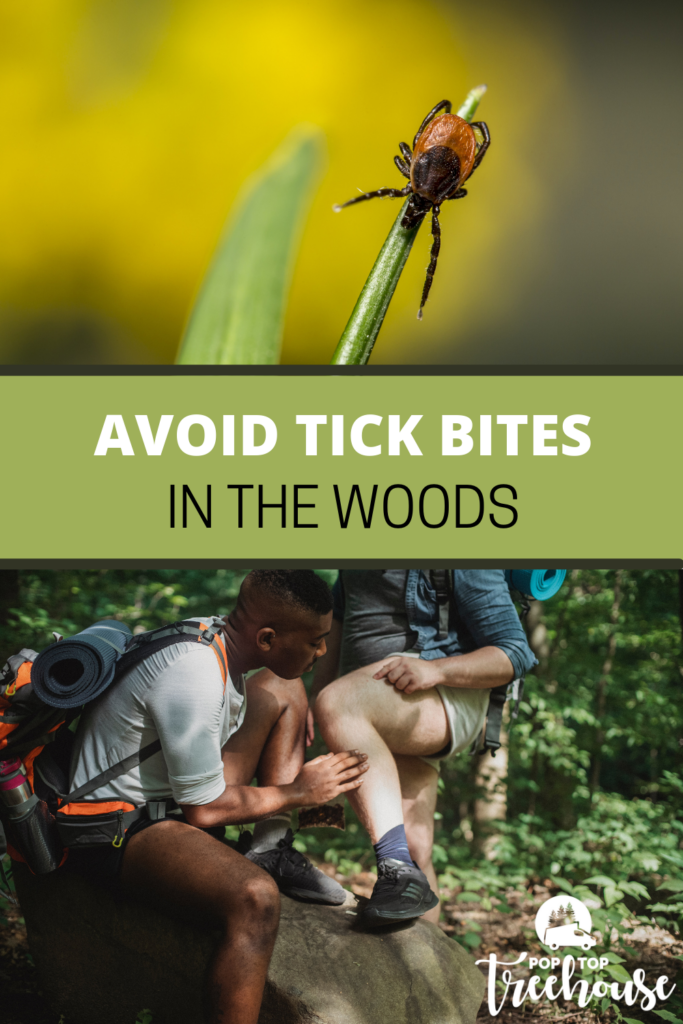
When having fun camping and enjoying nature, it’s easy to forget that some not-so-fun things can happen. One of those being tick bites!
Small but dangerous, ticks are known for carrying Lyme disease and passing it along to humans by biting them. Like us campers, they love woody conditions. It’s important that we know not only how to deal with a tick bite but also how to stop ticks from biting humans altogether.
Below are the basics you need to know about ticks before heading out into the woods and having a blast connecting with nature.
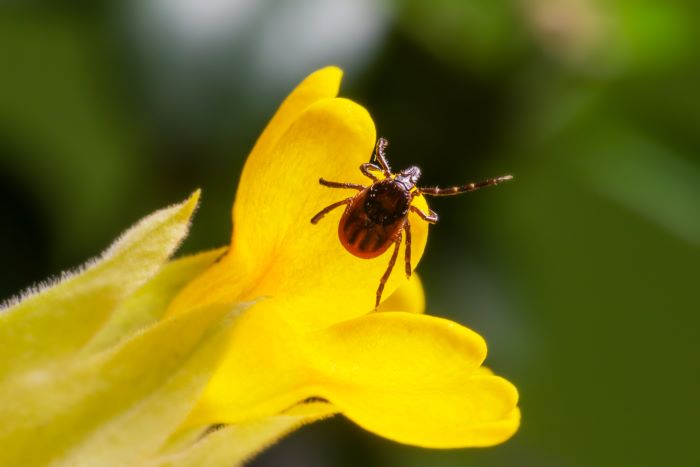
Identifying Ticks
While camping, you’re going to encounter plenty of insects while camping. It’s essential you know exactly what you’re looking for in regards to ticks, so you don’t freak out over any bug landing on you!
In Canada, there are around 40 species of ticks, but not all of them cause Lyme disease. The most common tick is the Ixodes tick which is also known as the black-legged or deer tick. It’s the most common carrier of Lyme disease.
You can identify the deer tick by its hard brown and black bodies that can appear grey when enlarged. As an adult, they have eight legs but only have six legs as nymphs. Usually, they’re 1-5 mm long but can grow up to 20 mm as feeding adults.
Other common ticks include the lone star tick, the American dog tick, and the rocky mountain wood tick. I highly suggest you check out this Tick ID from the CDC to become familiar with the appearance of common ticks in your area.
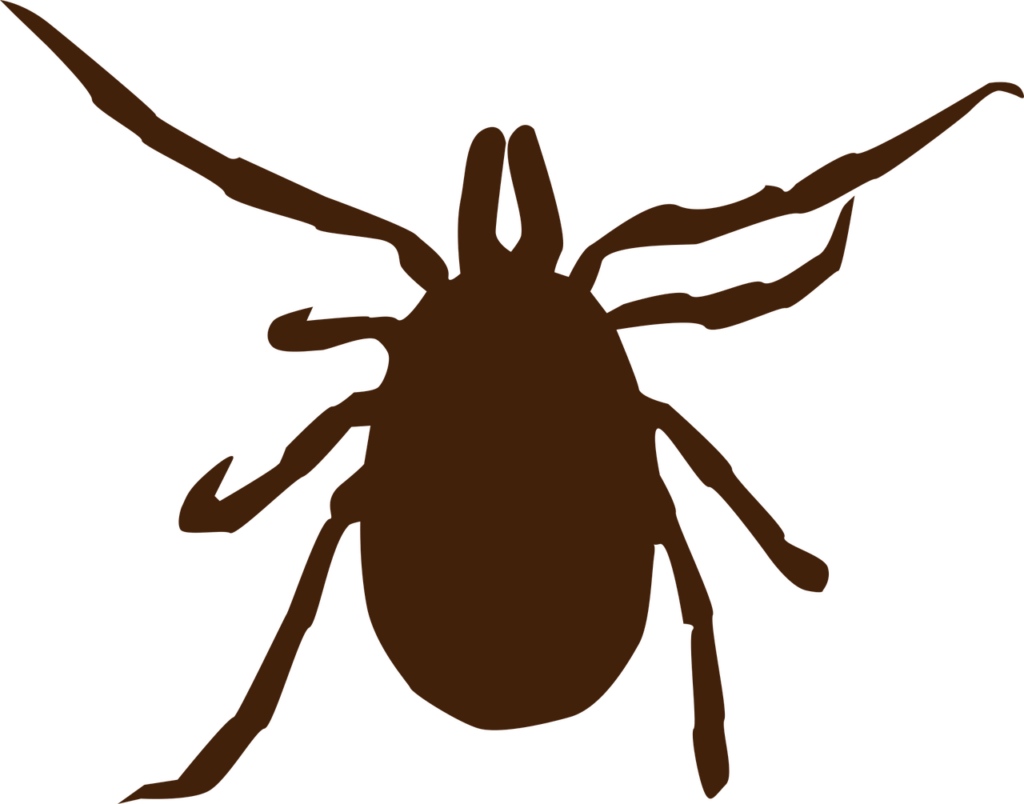
Tick’s and Lyme Disease
Lyme disease is an inflammatory disease that spreads through tick bites. Ticks contract Lyme disease during their larvae and nymph stages by feasting on infected birds and rodents.
Lyme disease bacterium is known as Borrelia burgdorferi. When a tick feeds on an infected host, it will carry the bacteria in the gut. When it begins to feed, that bacteria works its way up to the salivary glands, which can then go into the bloodstream of the human or animal it’s feeding on.
The longer a tick feeds on you, the higher the chances of contracting Lyme disease. You can get infected by larvae, nymph, or adult ticks. Due to their size, larvae can be more difficult to detect. Look for any abnormal spots on the skin to help identify any small larvae.
How to Avoid Ticks in the Woods
Luckily, Lyme and other tick-borne diseases are largely preventable. As a responsible camper, you’ll want to be aware of how you can prevent tick bites while in the woods. Rather than have to deal with tick removal, it’s easier to prevent it in the first place.
Ticks are most often a concern in spring and early summer when the nymph ticks feed. Then, adult ticks become more of a threat in the fall.
If possible, avoid tick-infested areas. Ticks prefer moist-shaded areas and overgrown grassy habitats. Always stick to trails and pathways and avoid walking through low-lying brush and tall grass.
What you wear has the best impact. Wear long sleeve pants and shirts. Tuck pants into the socks to avoid any exposed skin. Wear light-coloured clothing so you can easily spot ticks.
Insect repellent is especially important while out in the woods. Spray the insect repellent to the openings of any clothing to prevent ticks from going underneath where they are not easily seen.
Perform tick checks frequently by going over your clothing and exposed skin while in the woods. While hiking, switch who is in front so everyone can monitor potential ticks hanging out on backs.

How to Remove a Tick
Choose the camper with the steadiest hand to use a pair of fine-pointed tweezers from your first aid kit. Grasp the mouth part of the tick (NOT the body), which is as close to the skin’s surface as possible. This reduces the tick’s head from detaching, remaining in the skin, and causing infections.
Slowly pull the tick out with straight and even pressure. It can take a minute or two of slow and constant pulling.
Place the tick in a sealable bag or container. You’ll want to hang onto the tick if you develop any symptoms after experiencing a tick bite.
Wash the bite area using soap and water. Follow up by applying an antiseptic. You can consult a pharmacist about any antiseptic medication they can provide over the counter.
If you develop any kind of symptoms after experiencing a tick bite or are concerned, consult with a doctor as soon as possible. When treated with antibiotics early, you can avoid Lyme disease.
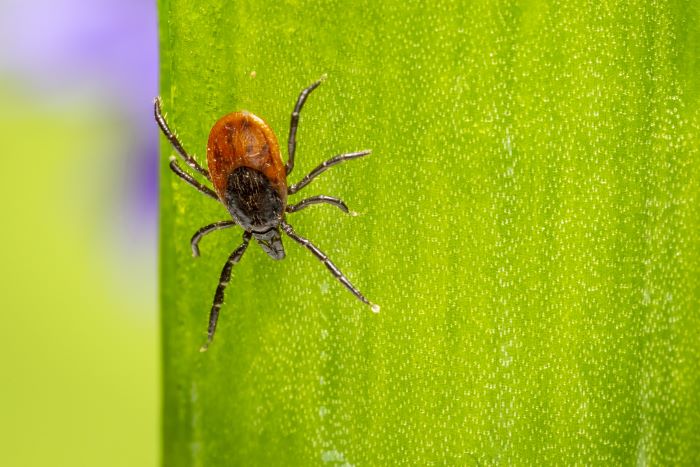
Bad Tick Removal Options
There are many methods to remove a tick. Here are a few methods you DO NOT want to try.
- Burning the tick with a lighter or match.
- Using petroleum jelly or other oils to suffocate the tick.
- Grabbing the tick between your fingers and tugging it.
Remove a Tick From Clothing
It can be difficult to remove ticks from clothing, and you want to avoid touching them. One of the best ways to remove ticks is using the sticky side of duct tape. If you’re camping, this is just one of the many uses for duct tape! Otherwise, try to gently shake off the tick or trap it in a container.
Remove any clothes and if your campsite has them, immediately put the clothes in a dryer on high heat, then wash them. If you don’t have access to a dryer, seal the clothes in a bag and do so when you’re home again. Do not wear the clothes again.
Removing a Tick From a Dog
Ticks may be even more common with our furry friends since they love running through the bush so much! Due to their fur, it can be especially difficult to see ticks and prevent bites.
Luckily, there are plenty of veterinarian medications that can help with preventing ticks from biting dogs. Most vets will suggest a monthly preventative in which you apply the treatment to the back of the neck. Ask your vet for suggestions before camping with your pets for the season.
Perform regular tick checks on your dogs as well. To do so, run your hands along their body and feel for abnormalities. Especially look around their eyes and face. A tick bite will feel like small lumps. If you do find a tick, you can follow the same safe tick removal tips above.
Lyme disease symptoms will look different in pets. See a vet if you notice any lethargy, sudden joint pain or lameness, or any other out-of-the-ordinary symptoms. A vet can easily perform a blood test to check for Lyme disease.


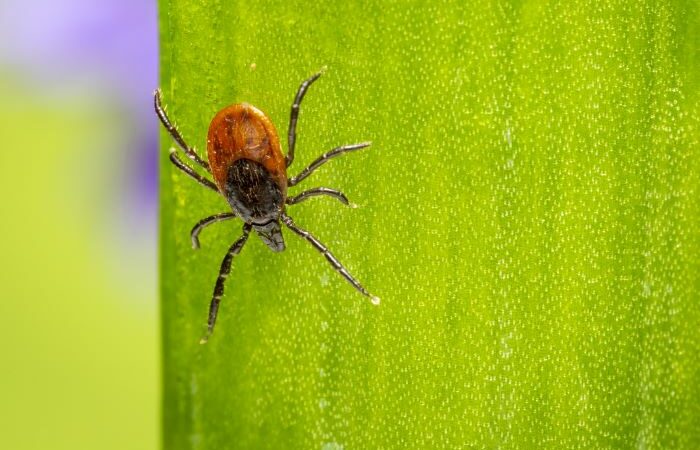
 9 Fun Campfire Games for Adults and Families
9 Fun Campfire Games for Adults and Families
